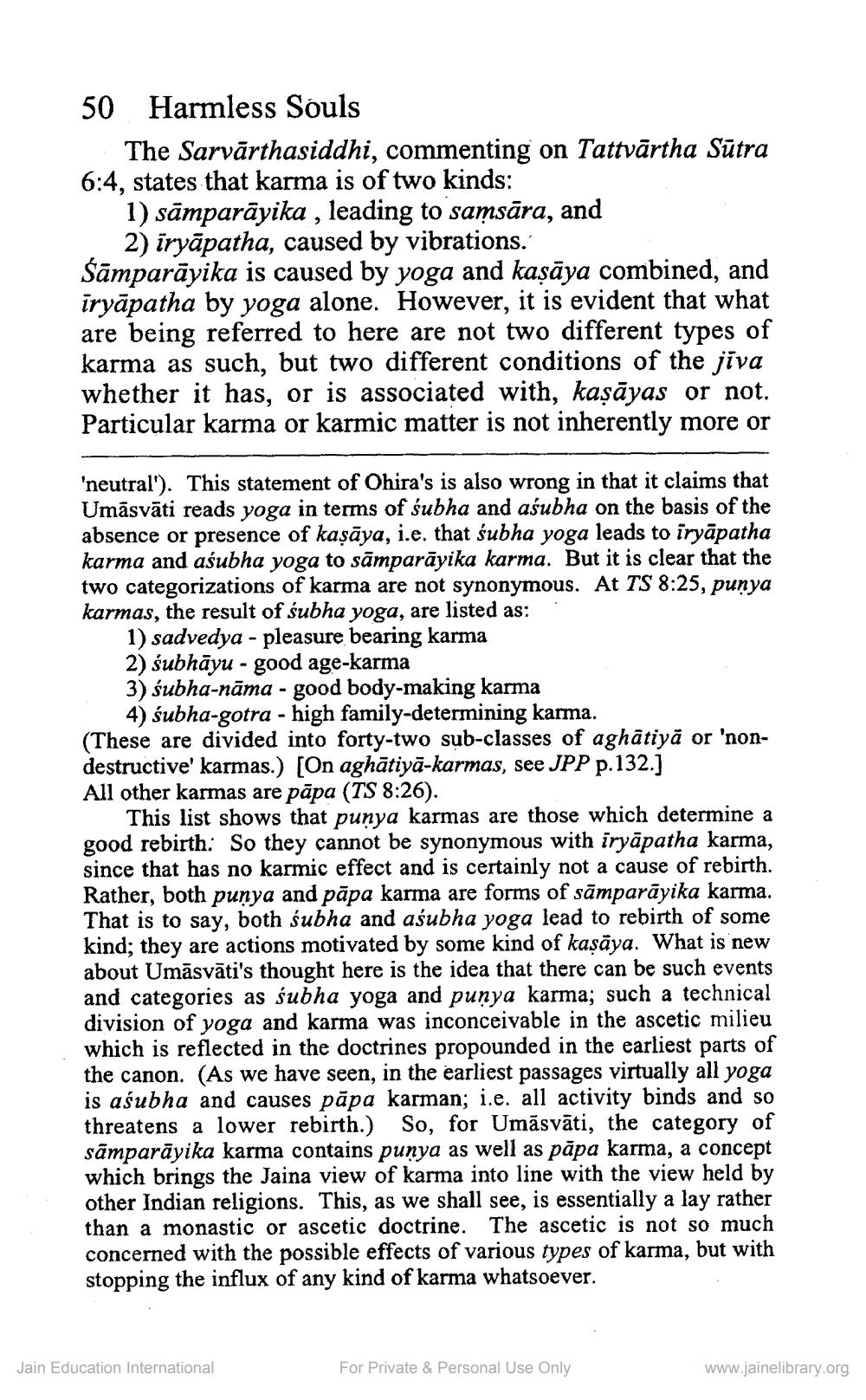________________
50 Harmless Souls
The Sarvārthasiddhi, commenting on Tattvärtha Sutra 6:4, states that karma is of two kinds:
1) samparāyika, leading to samsāra, and 2) iryāpatha, caused by vibrations. Samparāyika is caused by yoga and kaṣāya combined, and iryapatha by yoga alone. However, it is evident that what are being referred to here are not two different types of karma as such, but two different conditions of the jiva whether it has, or is associated with, kaṣāyas or not. Particular karma or karmic matter is not inherently more or
'neutral'). This statement of Ohira's is also wrong in that it claims that Umāsvāti reads yoga in terms of subha and asubha on the basis of the absence or presence of kaṣāya, i.e. that subha yoga leads to iryāpatha karma and aśubha yoga to samparāyika karma. But it is clear that the two categorizations of karma are not synonymous. At TS 8:25, punya karmas, the result of subha yoga, are listed as:
1) sadvedya - pleasure bearing karma 2) subhāyu - good age-karma
3) subha-nāma - good body-making karma
4) subha-gotra - high family-determining karma. (These are divided into forty-two sub-classes of aghatiya or 'nondestructive' karmas.) [On aghātiyā-karmas, see JPP p.132.] All other karmas are papa (TS 8:26).
This list shows that punya karmas are those which determine a good rebirth: So they cannot be synonymous with iryāpatha karma, since that has no karmic effect and is certainly not a cause of rebirth. Rather, both punya and papa karma are forms of sāmparāyika karma. That is to say, both subha and aśubha yoga lead to rebirth of some kind; they are actions motivated by some kind of kaşaya. What is new about Umāsväti's thought here is the idea that there can be such events and categories as subha yoga and punya karma; such a technical division of yoga and karma was inconceivable in the ascetic milieu which is reflected in the doctrines propounded in the earliest parts of the canon. (As we have seen, in the earliest passages virtually all yoga is aśubha and causes papa karman; i.e. all activity binds and so threatens a lower rebirth.) So, for Umasvati, the category of sāmparāyika karma contains punya as well as pāpa karma, a concept which brings the Jaina view of karma into line with the view held by other Indian religions. This, as we shall see, is essentially a lay rather than a monastic or ascetic doctrine. The ascetic is not so much concerned with the possible effects of various types of karma, but with stopping the influx of any kind of karma whatsoever.
Jain Education International
For Private & Personal Use Only
www.jainelibrary.org




